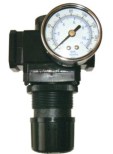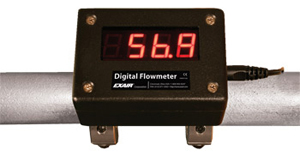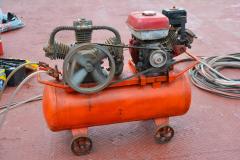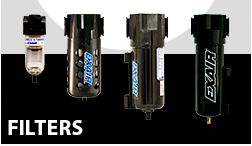
You’ve probably been there. You install a new Super Air Knife, or an EasySwitch Wet-Dry Vac (or any other product), and it doesn’t work as we promised. Or it works great for 2-3 years, and now it’s faltering. You have trouble shot everything you know to do. You’ve changed the filters, checked for leaks on the product, checked the connections, but still it is not performing as it was, or how it is supposed to. This is usually when I get the call, and more times than not, the issue is related to the air supply.

Whether this new item isn’t performing, or an older product has been working for 2 weeks, months, or years and stops, we first need to confirm the pressure. First, we need to make sure there is a T and pressure gauge at the point of use. Although psig is only one factor of the air flow, if it is too low (or too high in some cases) that is a definite problem. Without the proper psig, our tools will not function properly. If the psig is sufficient, and our product is not operating as claimed, the next thing we check is the SCFM.

There are a few ways of finding the SCFM…one is very easy and reliable, and the other can get you close enough to realize if there is a problem or not. The easy way is by installing a Digital Flow Meter near the point of use. Although the most reliable, it is not always feasible or cost-effective to have these near every air application in your system.

Without the Flow Meter, we need to start looking for reasons why the SCFM is not there. Whether a new install or an existing one, we need to evaluate the air flow by starting with the basics. Let’s start by identifying how much air your application requires. For instance, a Super Air Knife consumes 2.9 SCFM per inch, so a 48″ Super Air Knife will use 139.2 SCFM (at standard operation), that is equivalent to a 35 HP compressor dedicated solely to this 1 product. Assuming your compressor is large enough to flow this amount of air, we need to see what other products are being utilized in the system as well. Does your overall system have enough air to run each product?
So your compressor is large enough, the next step is to look at your line size. To run 139.2 SCFM, you will need a 3/4″ line and that is if you are within 20 ft of the source (compressor). If you are 150 feet away, you will need 1 1/4″ lines, and so on. This is an issue that pops up often.

The next thing we look for is any type of restrictions on the line. Are your filter and oil separators sized properly? Were there new products / stations added to the line. Is the product itself being maintained properly? Is your Air clean and dry? Are there any other line restrictions that could be interfering with the flow?
If all of these things check out, our last course of action is to get the product back for evaluation. We will tear it apart, many times needing to destroy it to find the cause. But proudly, I must say that we rarely find a manufacturing defect, but we look hard just in case, because we want to know as well. We can usually show you the issue, and find the root cause. Our reputation and quality is the highest in the industry, and it is not something we take lightly. We want to find a defect if it exists, so that we can immediately address them, and head off any future issues.
If you have one of our products that isn’t functioning as you hoped, or just purchased one that isn’t up to par, please look at some of the items mentioned above. And as always, reach out to us and let us help f we can.
Thank you for stopping by,
Brian Wages
Application Engineer
EXAIR Corporation
Visit us on the Web
Follow me on Twitter
Cover photo by gerralt / 25503 and licensed by Pixabay